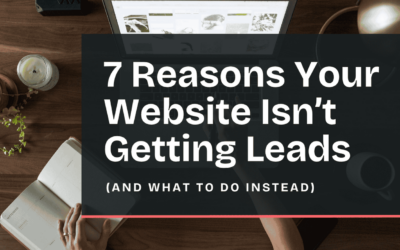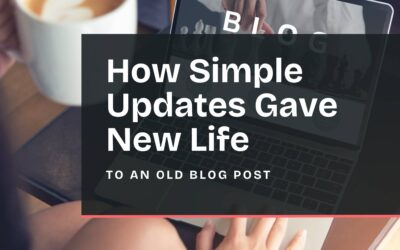What makes a landing page different?
It’s important to understand what makes a landing page distinct from a standard web page. A landing page is a standalone web page created for a specific marketing campaign. It’s where a visitor ‘lands’ after clicking on a link in an email, ad, or similar marketing channel. Unlike other pages on your site, a landing page is not a part of the website’s navigation and serves a single, focused objective — to guide the user towards taking a particular action.
The call to action (CTA) encourages the user to take a particular action, such as signing up, buying a product, or downloading a resource. The goal is to provide a focused path that guides visitors towards that CTA, without the distractions of a homepage, site navigation, or a product page. If the user takes the desired action on the landing page then it’s a successful conversion.
Offering more than one option on a landing page can be confusing for users, creating overwhelm, and then users struggle to make a decision which is called ‘the paradox of choice’.
Key characteristics of landing pages
Landing pages are characterized by their simplicity and directness. They contain minimal navigation to keep the user’s attention on the conversion goal. Additionally, landing pages typically include:
-
- A compelling headline
- A brief description of what’s being offered
- A form to capture user data or a strong call-to-action (CTA) that leads to the next step in the buyer’s journey
- Relevant images or videos that support the content
- Social proof elements such as testimonials and trust badges
Landing page vs. home page
These two pages can be confused so let’s clear up the difference. A landing page is crafted with a purpose, deliberately steering the user to a specific action, whereas a homepage is the hub to the broader content of your site. Homepages are often multifaceted, acting as an introductory space to your brand, with multiple navigation options for visitors to explore. On the other hand, a landing page is a standalone entity, with only one action available, ensuring that there’s no confusion about what the user should do next.
Crafting your landing page
The strategic development of a landing page involves thoughtful choices about design, content, and functionality. A well-crafted landing page is user-centric, persuasive, and optimized to maximize conversions.
Designing for user experience (UX)
A smooth UX is non-negotiable in the creation of a landing page. This includes fast load times, mobile responsiveness, and a logical flow that guides users towards the CTA. Focus on:
- Simplicity: Steer clear of clutter to avoid overwhelming the user.
- Contrasting CTA Buttons: Ensure your CTA stands out and is easily clickable.
- Visual Hierarchy: Guide visitors through the page with design elements that direct attention.
- Consistency: Align the design with the look and feel of the marketing material that led users to the page.
Compelling copy and content
The content of your landing page must be compelling and concise. This is not the place for long-winded explanations. Instead, focus on the benefits of the offer and how it meets the user’s needs.
- Headline: Craft a headline that immediately grabs attention and communicates the unique value of your offer. Must like a newspaper article would
- Visuals: High-quality images and videos can significantly enhance your page’s appeal and narrative.
- Language: Utilize power words that motivate and speak to the user’s desires.
Optimization for conversions
To optimize for conversions, every element of your landing page should be geared towards facilitating the desired action. This includes:
- Form Length and Fields: Only request essential information and keep forms as concise as possible.
- Clear and Strong CTAs: Make your CTA irresistible and emphasize the immediate benefit of taking action.
- A/B Testing: Continuously test different versions of your landing page to identify the best-performing elements.
Implementing your strategy
With a clear picture of what a landing page entails, we can now focus on the implementation of an effective strategy.
Focusing your objective
Start with the end in mind. What is the primary action you want users to take on the landing page? Is it to download an ebook, sign up for a webinar, or request a demo? Every detail of your landing page should funnel visitors towards this objective.
Understanding your audience
A high-converting landing page directly addresses the needs, interests, and pain points of the target audience. Profound user research and persona development are invaluable in tailoring your landing page content to resonate with your target market. (Really this is invaluable for your whole website and business.) Consider your business’ customer journey, and how the landing page fits into that path.
Maintain consistency
A well-conceived landing page strategy aligns the expectations set by the ad or link with the page content. If your ad promises solutions to “streamline your workflow,” the landing page should deliver on that promise with content that supports it.
Building trust
Trust fuels online interactions. Include trust signals such as industry certifications, security badges, and money-back guarantees that convey reliability and security to your visitors.
Social proof is a powerful influencer to build trust. Testimonials, case studies, and reviews from satisfied customers serve as credible validation of your product or service. They reassure visitors and lower the barrier to taking action.
Ensuring landing page success
Your landing page is an integral part of your marketing funnel. The best landing pages are never truly finished — they are continuously evolving and adapting to meet the changing needs of your audience and the demands of the market.
A well-crafted landing page can significantly improve conversion rates, which directly impacts your ROI. It also provides a clear metric to evaluate the effectiveness of your marketing efforts. But perhaps most importantly, landing pages offer a way to segment your audience and create more targeted messaging, leading to higher quality leads and more satisfied customers.
With a distinct landing page for each marketing campaign, you can measure the campaign’s success more accurately. You’ll know which campaigns are driving real results and which may need to be reevaluated.
Tracking data & analytics
This information helps you can understand where users are coming from, what they do on your page, and how you can improve their experience and your conversion rates.
Utilize data to understand user behavior
Data doesn’t lie, and when it comes to user behaviour on your landing page, it can reveal crucial insights. Are users dropping off at a specific point in your sales funnel? Is your CTA being ignored? Analytics tools can provide a wealth of information to guide your strategy.
Implement A/B testing to optimize the page
A/B testing can be a game-changer. By running simultaneous tests with variations of your landing page, you can determine which elements are performing best and make data-driven decisions to optimize for conversions.
Track metrics
Which metrics matter when it comes to landing pages? Conversion rates, bounce rates, time on page, and click-through rates are the key performance indicators (KPIs) to focus on. They can give you a holistic view of your page’s performance and areas for improvement. Once your page is live, it’s time to become an explorer of data. Your tracking and analytics tools are your compass and map, guiding you towards conversions.
Set up conversion tracking
You cannot manage what you don’t measure. Set up conversion tracking to understand which channels are driving the most valuable traffic to your landing page.
Analyze user flow
Where do users go after visiting your landing page? Analyzing the user flow can uncover issues in your funnel that may be deterring conversions.
Conclusion
In conclusion, mastering your landing page strategy is an ongoing process that requires a mix of creative insight and data-driven decision-making. By understanding the core principles of effective landing page design, and leveraging the tools and techniques available, you can create landing pages that not only capture attention but also compel action. With an open mindset towards learning and iterating, your landing pages will become a powerful asset in your marketing arsenal.
What to learn more about how landing pages are part of Conversion Rate Optimization or Web Design & Development? We’d love to chat! Schedule a time with us here.





